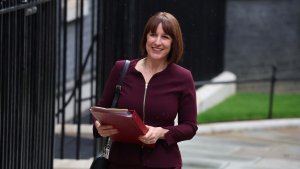Official figures revealed that average regular pay surged again, to 5.6% in the three months to November.
Wage Growth Accelerates Despite Flagging Jobs Market
Official figures revealed that average regular pay surged again, to 5.6% in the three months to November.

Wage growth has picked up pace in spite of “warning lights” flashing over the wider jobs market as fears grow about the impact of Labour’s Budget measures.
Official figures revealed that average regular pay surged again, to 5.6% in the three months to November, which is the highest since last May and up from 5.2% in the previous three months, driven by growth in the private sector.
Wages are also outstripping inflation at the fastest pace since August 2021, up by 3.4% when taking the Consumer Prices Index into account, according to the Office for National Statistics (ONS).
The figures lay bare the wage cost pressures already facing businesses and come amid warnings over a pull-back in hiring as moves announced by Chancellor Rachel Reeves in last October’s Budget will send staff pay bills surging even higher.
The British Chambers of Commerce (BCC) cautioned there were already “warning lights” on the jobs market as the latest figures showed unemployment rising, vacancies falling and the biggest drop in payrolled workers since the height of the pandemic.
Experts said the Bank of England was still likely to cut interest rates next month as worries over the weakening jobs sector would outweigh strong wage growth.
The ONS said the rate of unemployment increased to 4.4% in the three months to November, up from 4.3% in the three months to October.

The number of workers on payrolls also plunged by 47,000 during December to 30.3 million – the biggest drop since November 2020.
It follows a revised 32,000 fall the previous month.
In a further sign of job market woes, the ONS said vacancies dropped by another 24,000 in the three months to December, to 812,000.
The ONS cautioned the latest payroll estimation, drawn from tax data, was subject to change, while the unemployment rate is still seen as unreliable due to changes to the jobs survey, but experts said the figures show a flagging jobs market overall.
It comes ahead of Labour’s move to hike national insurance contributions for employers and the minimum wage, both in April.

Jane Gratton, deputy director of public policy at the BCC, said: “The labour market continues to be challenging for many businesses, with wage growth continuing to rise as firms compete for skilled workers.
“This is a concern as they face a significant rise in employment costs in April.”
She added: “The full impact of the changes to national insurance and the minimum wage, announced at the Budget, won’t be fully seen until later in the year.
“However, the warning lights on recruitment, employment and training are already flashing.”
The ONS data showed that regular private sector pay growth jumped to 6% in the three months to November, its highest rate since February last year.
Pay growth is being watched carefully by the Bank for signs of stubborn inflation, but a surprise fall in CPI last month, to 2.5% from 2.6% in November, is seen as smoothing the path for a February rate cut, from 4.75% to 4.5%.

Robert Wood, an economist at Pantheon Macroeconomics, said: “Employment dropped in December as firms put hiring on hold, and the downtrend in payrolls has worsened over the past few months showing Chancellor Rachel Reeves’s tax-hiking budget along with surging uncertainty after Mr Trump’s election have weighed on growth.”
But with inflation forecast to rise back up to 3%, the Bank faces a difficult dilemma.
Matt Swannell at the EY Item Club said: “Recent messaging from the Monetary Policy Committee (MPC) suggests it is becoming more concerned about the weakness of employment.
“So though pay growth remains resilient, the EY Item Club still expects the MPC to lower Bank Rate by 25 basis points in February.”
Thanks for signing up to Minutehack alerts.
Brilliant editorials heading your way soon.
Okay, Thanks!

